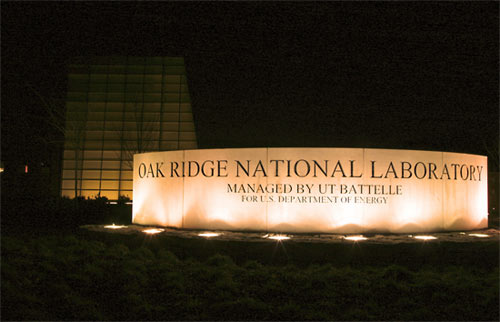The Oak Ridge National Laboratory’s Jaguar supercomputer is undergoing a $97 million upgrade that will not only result in a name change — soon to be known as “Titan” — but also stands a good chance of ruling the Top500 list of supercomputers when it’s complete in 2012. If and when that occurs, they’ll have graphics processing unit (GPUs) tech from NVIDIA to thank (in large part).
According to Cray, which won the contract to build the supercomputer, “the Titan system will have a peak performance between 10 and 20 petaflops (quadrillion mathematical calculations per second) of high performance computing (HPC) power.” That’s more than twice as fast as today’s ruling champ, the K computer at Japan’s RIKEN Advanced Institute for Computational Science, while only drawing a third of the power it takes to keep K up and running.
This will be made possible with blades equipped with AMD “Interlagos” Opteron processors and 960 “Fermi” Tesla GPUs from NVIDIA. And that’s just the first phase. Next year, Cray plans to bolt on new “Kepler” series Tesla GPUs for better performance. All told, Titan will comprise of 18,000 AMD processors and an equal number of Nvidia GPUs.
But Titan’s processing power won’t be evenly divided between the two technologies.
The CTO of NVIDIA’s Tesla unit, Steve Scott, says that his company’s chips will shoulder most of the workload, 85 percent in fact. This is due to the advantage GPUs hold over CPUs from Intel and AMD in parallel computing and floating point operations — capabilities that aid in pumping out high-speed, graphically and geometrically intense visuals and are increasingly being used to speed up repetitive HPC tasks.
Titan also reflects how computer graphics companies are pursuing new opportunities in HPC. Both NVIDIA and AMD — the latter of which got in the GPU market with its acquisition of ATI in 2006 — are courting the supercomputing crowd with energy efficient, GPU-based tech. Even Intel is eyeing HPC applications using research gleaned from Larrabee, the company’s abandoned attempt to commercialize its own GPUs.
In this case, it’s interesting to see CPUs from AMD, matched with GPUs from NVIDIA. It goes to show that there’s no such thing as strange bedfellows when it comes to conquering the Top500.
via VentureBeat, AllThingsD
Image credit: Oak Ridge Lab News – Flickr, CC


Leave a Reply